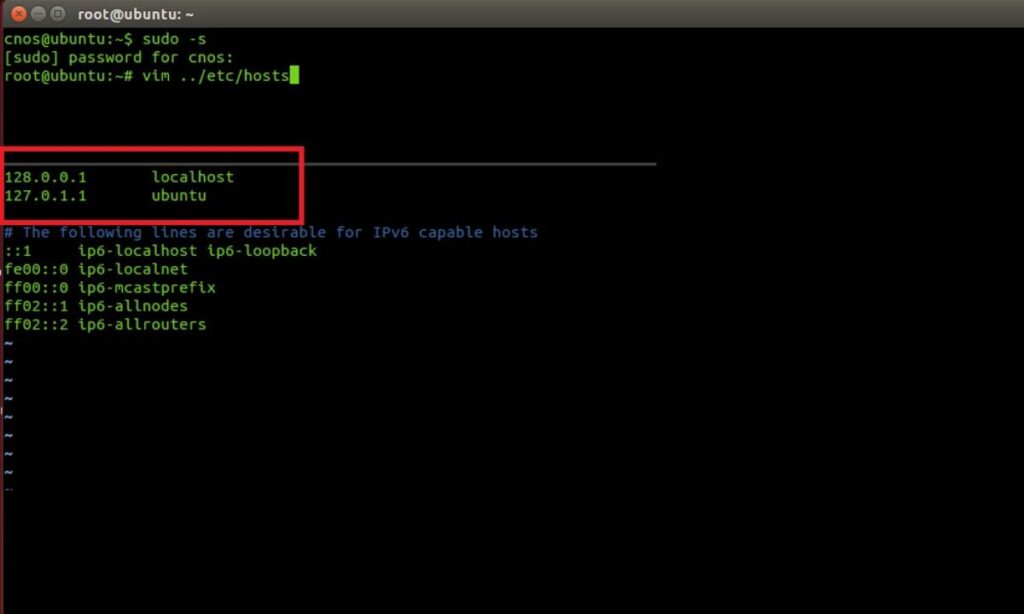127.0.0.1:62893 is a combination of an IP address and a port number. It’s a crucial concept in networking and local development. Understanding this address can help developers and IT professionals troubleshoot issues. Let’s dive into the details of this mysterious-looking string of numbers and symbols.
What is 127.0.0.1:62893 and Why is it Important?
127.0.0.1:62893 consists of two parts: an IP address and a port number. The IP address 127.0.0.1 is known as localhost. 62893 is a specific port number used for communication. This combination is important for local development and testing. It allows applications to communicate within the same device.
Developers use it to test network-based applications without internet access. System administrators rely on it for diagnosing network issues. Understanding this address helps in configuring firewalls and security settings. It’s a fundamental concept in computer networking and software development.
The Role of 127.0.0.1 (Localhost) in Networking
127.0.0.1 is a special IP address known as localhost. It always refers to the current device you’re using. When you access 127.0.0.1, you’re connecting to your own computer. This loopback address is built into the TCP/IP protocol.

It’s used for testing network services without affecting other devices. Localhost is available even when your computer is offline. It’s a virtual interface that doesn’t require physical network hardware. Many web servers use localhost for development environments. Database systems often bind to localhost for security reasons.
Some applications use localhost to ensure they’re the only instance running. Understanding localhost is crucial for network troubleshooting. It’s a fundamental concept in computer science education.
Benefits of Using Localhost
Localhost provides several advantages in development and testing. It offers a secure environment for running services locally. Developers can test web applications without an internet connection. It reduces latency since data doesn’t leave the device.
Localhost helps in isolating issues from external network problems. It’s useful for testing client-server applications on a single machine. Security testing can be performed safely using localhost. It allows for rapid prototyping of network-based applications.
Localhost is essential for developing microservices architectures. It simplifies the process of setting up development environments.
Common Misconceptions About Localhost
Many people mistakenly believe localhost requires an internet connection. Some think 127.0.0.1 is their public IP address. There’s a misconception that localhost is slower than remote connections. Some believe localhost is not secure for testing sensitive applications. Others think localhost can’t simulate real network conditions.
Some developers assume localhost behaves exactly like a remote server. There’s a misconception that localhost can’t be used with containerized applications. Some believe localhost is only useful for web development.
Others think localhost can’t be used for multi-user applications. Understanding these misconceptions helps in better utilizing localhost.
Read This Blog: Defstartup Console Tech: The New Gaming System
What is Port 62893 and How is it Used?
Port 62893 is a specific communication endpoint. It’s part of the transport layer in the TCP/IP model. Ports allow multiple network services to coexist on a single IP address. 62893 is in the dynamic port range (49152-65535). Dynamic ports are typically assigned automatically by the operating system.
They’re often used for temporary connections or client-side ports. Port 62893 might be used by various applications or services. It’s not a well-known port with a standardized use. The port number can change with each connection or application restart.
Understanding port numbers is crucial for network configuration and troubleshooting. Firewalls often use port numbers to filter network traffic.
How Ports Work in Networking
Ports act as communication endpoints for computers. They allow multiple services to run on a single IP address. Ports are identified by numbers ranging from 0 to 65535. Well-known ports (0-1023) are reserved for standard services.
Registered ports (1024-49151) are assigned by IANA for specific services. Dynamic ports (49152-65535) are used for temporary connections. Ports can use TCP or UDP protocols for communication.
The combination of IP address and port number is called a socket. Sockets enable point-to-point communication between devices. Understanding ports is essential for network administrators and developers.
Dynamic vs. Static Ports: What’s the Difference?
Static ports are permanently assigned to specific services. Dynamic ports are temporarily assigned by the operating system. Well-known services typically use static ports (e.g., HTTP on port 80).
Dynamic ports are often used for client-side connections. Static ports provide consistency for server applications. Dynamic ports offer flexibility for multiple client connections. The choice between static and dynamic ports depends on the application’s needs.
Network administrators often configure firewalls based on port types. Understanding the difference helps in troubleshooting network issues. It’s important for designing scalable network architectures.
Practical Applications and Use Cases of 127.0.0.1:62893
127.0.0.1:62893 has various practical applications in software development. It’s commonly used for testing web applications locally. Developers use it to debug network-related issues in their code.

It’s useful for running development servers without internet access. Database developers often use it for local database connections. It’s employed in testing microservices architectures on a single machine. Security professionals use it for testing network security tools. It’s helpful in simulating complex network topologies for testing.
Game developers use it for testing multiplayer game logic. It’s utilized in IoT development for simulating device communication. Understanding these use cases helps in leveraging 127.0.0.1:62893 effectively.
Web Development and Testing
Web developers frequently use localhost for testing. It allows them to run web servers on their local machine. Developers can test database connections without a live server. Frontend developers use it to test API integrations locally.
It’s useful for testing responsive designs across different devices. Content management systems often use localhost for initial setup. Web security testing can be performed safely on localhost. It’s essential for developing and testing progressive web apps.
Localhost is used in setting up local development environments. Understanding localhost is crucial for modern web development workflows.
Network Application Development
Network application developers rely heavily on localhost. It allows testing of client-server architectures on one machine. Developers use it to simulate network conditions for robustness testing. It’s crucial for developing peer-to-peer applications.
Localhost is used in testing network protocols without external dependencies. It’s helpful in developing distributed systems locally. Network monitoring tools often use localhost for initial configuration. It’s used in developing and testing VPN applications.
Localhost is essential for IoT device simulation and testing. Understanding localhost helps in creating more reliable network applications.
Database Development and Testing
Database developers frequently use 127.0.0.1 for local connections. It allows testing database performance without network overhead. Developers use it to set up and test replication scenarios.
It’s crucial for developing and testing database backup solutions. Localhost is used in testing database security measures. It’s helpful in simulating distributed database architectures. Database administrators use it for initial setup and configuration.
It’s used in developing and testing database migration scripts. Localhost is essential for optimizing database query performance. Understanding localhost in database contexts improves development efficiency.
Troubleshooting Common Issues with 127.0.0.1:62893
Issues with 127.0.0.1:62893 can arise due to various reasons. Common problems include port conflicts with other applications. Firewalls may block connections to specific ports. Incorrect network configuration can prevent localhost access. Some issues stem from improper application settings.
Outdated drivers or operating system bugs can cause problems. Virtual machines may have unique localhost configuration needs. Container environments might require special localhost handling. Network interface issues can affect localhost connectivity.
Understanding these common issues aids in quick problem resolution. Proper troubleshooting skills are essential for developers and system administrators.
Diagnosing Connection Problems
Start by checking if the service is actually running. Verify that the correct port number is being used. Use network diagnostic tools like netstat or lsof. Check system logs for any error messages or warnings. Ensure that firewalls are not blocking the connection.
Test the connection using different tools (browser, curl, telnet). Verify that the loopback interface is properly configured. Check for any conflicting applications using the same port.
Use packet capture tools to analyze the network traffic. Understanding these diagnostic steps helps in efficient problem-solving.
Read This Blog: Unveiling The Splashui captcha?ap=1 With Website Security
Resolving Port Conflicts
Identify which application is currently using the conflicting port. Use tools like netstat to list all active connections. Change the port number in your application’s configuration. Ensure that the new port is not reserved or in use.
Restart the application after changing the port. Update any client applications to use the new port. Check if the conflict is caused by a system service. Consider using dynamic port allocation if appropriate.
Test the application thoroughly after resolving the conflict. Understanding port conflict resolution is crucial for smooth application deployment.
Security Considerations and Best Practices
Security is crucial when working with localhost and specific ports. Avoid running unnecessary services on localhost. Use firewalls to restrict access to sensitive ports. Regularly update and patch your operating system and applications.
Implement strong authentication for services running on localhost. Be cautious when allowing remote access to localhost services. Use encryption for data transmitted over localhost when possible. Regularly audit your localhost services and connections. Be aware of potential localhost bypass techniques in web applications.
Understand the security implications of binding services to 0.0.0.0. Implementing these practices enhances the security of your local development environment.
Securing Localhost Services
Use strong, unique passwords for all localhost services. Implement IP whitelisting for sensitive localhost services. Regularly review and remove unused localhost services. Use SSL/TLS for encrypting localhost communications when possible.
Implement proper user authentication and authorization. Keep all software and libraries up to date. Use security headers in web applications, even on localhost. Implement proper session management in web applications.
Use secure coding practices to prevent common vulnerabilities. Regularly perform security audits of your localhost environment.
Best Practices for Port Usage
Avoid using well-known ports for custom applications. Use port numbers above 1024 for user applications. Document all port usage in your development environment. Use consistent port numbers across development and production.
Implement proper error handling for port-related issues. Use port knocking or similar techniques for additional security. Regularly scan for open ports on your localhost. Use port randomization for temporary services when appropriate.
Implement proper logging for all port activity. Understanding these best practices improves overall system security and stability.
Future Trends and Innovations Involving 127.0.0.1:62893
The use of localhost and specific ports continues to evolve. Containerization technologies are changing how localhost is used. IPv6 adoption may impact localhost addressing in the future. New protocols may emerge for local service discovery.

Increased focus on security may lead to new localhost practices. Edge computing may introduce new concepts related to localhost. Advancements in virtual and augmented reality may utilize localhost differently.
IoT developments may expand the role of localhost in device communication. Quantum computing may introduce new networking paradigms. Understanding these trends helps in preparing for future technological changes.
Emerging Technologies and Localhost
Blockchain technology may introduce new localhost use cases. AI and machine learning models may leverage localhost for data processing. 5G and beyond may change how we think about local vs. remote computing.
New programming paradigms may alter localhost usage patterns. Advancements in peer-to-peer technologies may expand localhost applications. Edge AI may require new approaches to localhost services.
Quantum networking may redefine the concept of localhost. Augmented reality applications may heavily rely on localhost for low-latency processing. Understanding these emerging technologies helps in future-proofing skills and knowledge.
Predictions for Future Networking Paradigms
Decentralized networks may change traditional client-server models. Zero-trust security models may alter how localhost is perceived. Software-defined networking may introduce new localhost concepts.
Quantum internet may redefine network addressing and localhost. AI-driven network management may automate localhost configuration. Blockchain-based networking may introduce new forms of local addressing.
Neuromorphic computing may change how we think about local processing. Molecular communication networks may introduce new localhost paradigms. Understanding these predictions helps in preparing for future technological shifts.
Frequently Asked Questions
What exactly is 127.0.0.1?
127.0.0.1 is the loopback IP address, also known as localhost. It always refers to the current device, allowing for local network communication without external connections.
Why is the port number 62893 used?
62893 is an example of a dynamic port number. It’s not standardized and can be any number in the dynamic port range (49152-65535), often assigned automatically by the operating system.
Is 127.0.0.1:62893 accessible from other devices?
No, 127.0.0.1 is only accessible from the device itself. Other devices cannot connect to your localhost address.
How can I find what’s using a specific port on my computer?
Use command-line tools like ‘netstat’ on Windows or ‘lsof’ on Unix-based systems to see which processes are using specific ports.
Is it safe to run services on localhost?
Generally, yes. Localhost is considered secure as it’s not accessible from external networks. However, proper security measures should still be implemented for sensitive applications.
Conclusion
Understanding 127.0.0.1:62893 is crucial in modern computing. It combines the concepts of localhost and port numbers. This knowledge is essential for developers and IT professionals. Localhost provides a secure and efficient way to test applications.
Port numbers enable multiple services to coexist on a single device. The practical applications of 127.0.0.1:62893 span various fields of technology. Proper troubleshooting skills for localhost issues are invaluable.
Security considerations are paramount when working with localhost services. Future trends indicate evolving roles for localhost in emerging technologies. Continuous learning and adaptation are key in this ever-changing technological landscape.

Amelia is a skilled SEO expert with a strong focus on content writing, keyword research, and web development. With a dedication to delivering results, she helps businesses optimize their online presence and drive organic growth.
Her expertise ensures that clients stay ahead in the ever-evolving digital landscape












